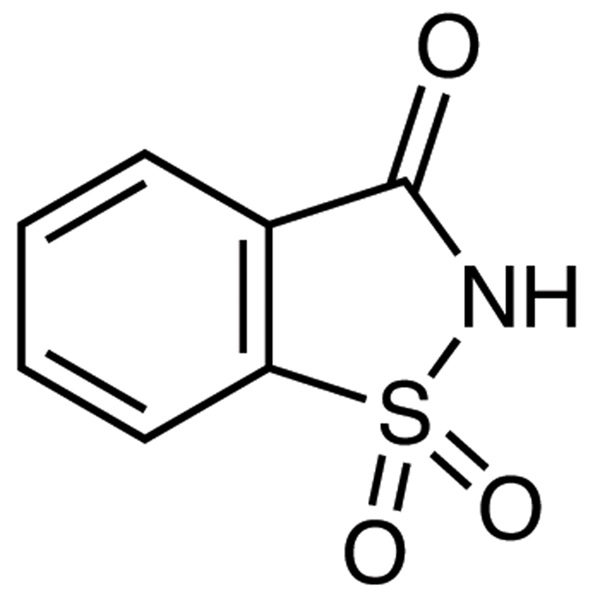Saccharin Insoluble CAS 81-07-2 Purity >99.0% (HPLC)
Shanghai Ruifu Chemical Co., Ltd. is the leading manufacturer of Saccharin Insoluble (CAS: 81-07-2) with high quality, food additive sweetener. Ruifu Chemical can provide worldwide delivery, competitive price, excellent service, small and bulk quantities available. Purchase Saccharin Insoluble, Please contact: alvin@ruifuchem.com
| Chemical Name | Saccharin Insoluble |
| Synonyms | Saccharin; o-Sulfobenzimide; o-Benzoic Sulfimide; Calcium Saccharin; Saccharin Sodium; Sodium Saccharin; 2,3-Dihydroxy-1,2-Benzisothiazol-3-one-1,1-Dioxide; 1,2-Benzothiazol-3(2H)-one 1,1-Dioxide; 2-Sulfobenzoic Acid Imide; Garantose; Glucid; Gluside; Saccharimide |
| Stock Status | In Stock, Commercial Production |
| CAS Number | 81-07-2 |
| Molecular Formula | C7H5NO3S |
| Molecular Weight | 183.18 g/mol |
| Melting Point | 226.0 to 230.0℃ |
| Density | 0.828 |
| Water Solubility | Practically Insoluble in Water |
| Solubility | Soluble in Acetone. Slightly Soluble in Ether, Ethanol, Chloroform |
| Stability | Stable. Incompatible with Strong Oxidizing Agents. |
| COA & MSDS | Available |
| Free Sample | Available |
| Origin | Shanghai, China |
| Category | Food Additive Sweetener |
| Brand | Ruifu Chemical |
| Items | Specifications | Results |
| Appearance | Colorless to White Crystalline Powder | Complies |
| Saccharin Purity | >99.0% (HPLC) | 99.26% |
| Melting Point | 226.0 to 230.0℃ | 226.2℃ |
| Loss on Drying | ≤1.00% | 0.45% |
| Residue on Ignition | ≤0.20% | <0.20% |
| Selenium | ≤35mg/kg | ≤30mg/kg |
| Arsenic | ≤3ppm | <2ppm |
| Heavy Metals | ≤10ppm | <10ppm |
| Infrared Spectrum | Consistent with Structure | Complies |
| Conclusion | The product has been tested and complies with the given specifications | |
Package: Bottle, Aluminium foil bag, 25kg/Cardboard Drum, or according to customer's requirement.
Storage Condition: Keep the container tightly closed and store in a cool, dry and well-ventilated warehouse away from incompatible substances. Protect from light and moisture. Incompatible with oxidizing agents.
Shipping: Deliver to worldwide by air, by FedEx / DHL Express. Provide fast and reliable delivery.
How to Purchase? Please contact Dr. Alvin Huang: sales@ruifuchem.com or alvin@ruifuchem.com
15 Years Experience? We have more than 15 years of experience in the manufacture and export of a wide range of high quality pharmaceutical intermediates or fine chemicals.
Main Markets? Sell to domestic market, North America, Europe, India, Korea, Japanese, Australia, etc.
Advantages? Superior quality, affordable price, professional services and technical support, fast delivery.
Quality Assurance? Strict quality control system. Professional equipment for analysis include NMR, LC-MS, GC, HPLC, ICP-MS, UV, IR, OR, K.F, ROI, LOD, MP, Clarity, Solubility, Microbial limit test, etc.
Samples? Most products provide free samples for quality evaluation, shipping cost should be paid by customers.
Factory Audit? Factory audit welcome. Please make an appointment in advance.
MOQ? No MOQ. Small order is acceptable.
Delivery Time? If within stock, three days delivery guaranteed.
Transportation? By Express (FedEx, DHL), by Air, by Sea.
Documents? After sales service: COA, MOA, ROS, MSDS, etc. can be provided.
Custom Synthesis? Can provide custom synthesis services to best fit your research needs.
Payment Terms? Proforma invoice will be sent first after confirmation of order, enclosed our bank information. Payment by T/T (Telex Transfer), PayPal, Western Union, etc.
Saccharin
C7H5NO3S 183.18
1,2-Benzisothiazol-3(2H)-one, 1,1-dioxide;
1,2-Benzisothiazolin-3-one 1,1-dioxide [81-07-2].
DEFINITION
Saccharin contains NLT 99.0% and NMT 101.0% of C7H5NO3S, calculated on the dried basis.
IDENTIFICATION
• Infrared Absorption <197K>
ASSAY
• Procedure
Sample: 500 mg
Analysis: Dissove the Sample in 40 mL of alcohol. Add 40 mL of water and phenolphthalein TS. Titrate with 0.1 N sodium hydroxide. Perform a blank titration, if necessary, and make the appropriate correction. Each mL of 0.1 N sodium hydroxide is equivalent to 18.32 mg of C7H5NO3S.
Acceptance criteria: 99.0%-101.0% on the dried basis
IMPURITIES
Inorganic Impurities
• Residue on Ignition <281>: NMT 0.2%. The ignition temperature is 600 ± 50.
• Heavy Metals, Method II <231>: NMT 10 ppm
Organic Impurities
• Procedure 1: Limit of Toluenesulfonamides
Internal standard solution: 0.25 mg/mL of caffeine in methylene chloride
Standard stock solution: 20.0 µg/mL of USP o-Toluenesulfonamide RS and 20.0 µg/mL of USP p-Toluenesulfonamide RS in methylene chloride
Standard solution: Evaporate 5.0 mL of the Standard stock solution to dryness in a stream of nitrogen. Dissolve the residue in 1 mL of the Internal standard solution.
Sample solution: Suspend 10 g of Saccharin in 20 mL of water, and dissolve using 5-6 mL of 10 N sodium hydroxide. If necessary, adjust the solution with 1 N sodium hydroxide or 1 N hydrochloric acid to a pH of 7–8, and dilute with water to 50 mL. Shake the solution with four quantities each of 50 mL of methylene chloride. Combine the lower layers, dry over anhydrous sodium sulfate, and filter. Wash the filter and the sodium sulfate with 10 mL of methylene chloride. Combine the solution and the washings, and evaporate almost to dryness in a water bath at a temperature not exceeding 40. Using a small quantity of methylene chloride, quantitatively transfer the residue into a suitable 10-mL tube, evaporate to dryness in a stream of nitrogen, and dissolve the residue in 1.0 mL of the Internal standard solution.
Blank solution: Evaporate 200 mL of methylene chloride to dryness in a water bath at a temperature not exceeding 40. Dissolve the residue in 1 mL of methylene chloride.
Chromatographic system
(See Chromatography <621>, System Suitability.)
Mode: GC
Detector: Flame ionization
Column: 0.53-mm × 10-m fused silica column, coated with G3 phase (film thickness 2 µm)
Temperature
Injector: 250
Detector: 250
Column: 180
Carrier gas: Nitrogen
Flow rate: 10 mL/min
Injection size: 1 µL
Split ratio: 2:1
System suitability
Samples: Standard solution and Blank solution
[Note-The substances are eluted in the following order: o-toluenesulfonamide, p-toluenesulfonamide, and caffeine.]
Suitability requirements: No peaks at the retention times for the internal standard, o-toluenesulfonamide, or p-toluenesulfonamide; Blank solution
Resolution: NLT 1.5 between o-toluenesulfonamide and p-toluenesulfonamide, Standard solution
Analysis
Samples: Standard solution and Sample solution
Acceptance criteria: If any peaks due to o-toluenesulfonamide and p-toluenesulfonamide appear in the chromatogram obtained with the Sample solution, the ratio of their areas to that of the Internal standard solution is NMT the corresponding ratio in the chromatogram obtained with the Standard solution.
Individual impurities: See Impurity Table 1.
Impurity Table 1
Name Acceptance Criteria (ppm)
o-Toluenesulfonamide 10
p-Toluenesulfonamide 10
• Procedure 2: Limit of Benzoate and Salicylate
Sample solution: 10 mL of a hot, saturated solution of saccharin
Analysis: Add ferric chloride TS dropwise to the Sample solution.
Acceptance criteria: No precipitate or violet color appears in the liquid.
SPECIFIC TESTS
• Melting Range or Temperature 741: 226-230
• Loss on Drying <731>: Dry a sample at 105 for 2 h: it loses NMT 1.0% of its weight.
• Readily Carbonizable Substances Test 271
Sample solution: 40 mg/mL in sulfuric acid (94.5%-95.5% [w/w] of H2SO4), maintained at 48-50 for 10 min
Acceptance criteria: The Sample solution has no more color than Matching Fluid A, when viewed against a white background.
• Clarity of Solution
[Note-The Sample solution is to be compared to Reference suspension A and to water in diffused daylight 5 min after preparation of Reference suspension A.]
Diluent: 200-g/L solution of sodium acetate
Hydrazine solution: 10.0 mg/mL of hydrazine sulfate. [Note-Allow to stand for 4-6 h.]
Methenamine solution: Transfer 2.5 g of methenamine to a 100-mL glass-stoppered flask, add 25.0 mL of water, insert the glass stopper, and mix to dissolve.
Primary opalescent suspension: Transfer 25.0 mL of Hydrazine solution to the Methenamine solution in the 100-mL glass-stoppered flask. Mix, and allow to stand for 24 h. [Note-This suspension is stable for 2 months, provided it is stored in a glass container free from surface defects. The suspension must not adhere to the glass and must be well mixed before use. Allow the suspension to stand for 24 h. ]
Opalescence standard: Dilute 15.0 mL of the Primary opalescent suspension with water to 1000 mL. [Note-This suspension should not be used beyond 24 h after preparation. ]
Reference suspension A: Opalescence standard and water (1 in 20)
Reference suspension B: Opalescence standard and water (1 in 10)
Sample solution: 200 mg/mL in Diluent
Analysis
Samples: Diluent, Reference suspension A, Reference suspension B, Sample solution, and water
Transfer a sufficient portion of the Sample solution to a test tube of colorless, transparent, neutral glass with a flat base and an internal diameter of 15–25 mm to obtain a depth of 40 mm. Similarly transfer portions of Reference suspension A, Reference suspension B, water, and Diluent to separate matching test tubes. Compare the solutions in diffused daylight, viewing vertically against a black background (see Spectrophotometry and Light-Scattering 851, Visual Comparison). [Note—The diffusion of light must be such that Reference suspension A can readily be distinguished from water, and that Reference suspension B can readily be distinguished from Reference suspension A. ]
Acceptance criteria: The Sample solution shows the same clarity as that of water, or Diluent, or its opalescence is NMT that of Reference suspension A.
• Color of Solution
Diluent A: 200-g/L solution of sodium acetate
Diluent B: 10-g/L solution of hydrochloric acid
Standard stock solution: Ferric chloride CS, cobaltous chloride CS, cupric sulfate CS, and Diluent B (3.0:3.0:2.4:1.6)
Standard solution: Standard stock solution and Diluent B (1 in 100). [Note-Prepare the Standard solution immediately before use. ]
Sample solution: Use the Sample solution from the test for Clarity of Solution.
Analysis
Samples: Diluent A, Standard solution, Sample solution, and water
Transfer a sufficient portion of the Sample solution to a test tube of colorless, transparent, neutral glass with a flat base and an internal diameter of 15–25 mm to obtain a depth of 40 mm. Similarly transfer portions of the Standard solution, Diluent A, and water to separate, matching test tubes. Compare the solutions in diffused daylight, viewing vertically against a white background (see Spectrophotometry and Light-Scattering 851, Visual Comparison).
Acceptance criteria: The Sample solution has the appearance of water or Diluent A, or is not more intensely colored than the Standard solution.
ADDITIONAL REQUIREMENTS
• Packaging and Storage: Preserve in well-closed containers. Store at room temperature.
• USP Reference Standards <11>
USP Saccharin RS Click to View Structure
USP o-Toluenesulfonamide RS
USP p-Toluenesulfonamide RS
| Hazard Symbols | Xn - Harmful |
| Risk Codes | R40 - Limited evidence of a carcinogenic effect |
| R62 - Possible risk of impaired fertility | |
| R63 - Possible risk of harm to the unborn child | |
| R68 - Possible risk of irreversible effects | |
| Safety Description | 24/25 - Avoid contact with skin and eyes. |
| UN IDs | UN 3077 9/PG 3 |
| WGK Germany | 2 |
| RTECS | DE4200000 |
| TSCA | Yes |
| HS Code | 2925110000 |
| Hazard Class | IRRITANT |
| Toxicity | LD50 oral in mouse: 17gm/kg |
Saccharin is an organic compound that is normally used as a non-nutritive sweetening agent. Also known as ortho-sulfobenzoic acid imide, saccharin occurs in the form of various salts, mainly calcium and sodium. Saccharin is a crystalline solid with a sweet taste (500 times sweeter than sugar).
Saccharin was discovered in 1879 by chemists Constantin Fahlberg and Ira Remsen as they were researching about the oxidation of o-toluenesulfonamide. While eating, Fahlberg noticed the presence of sweetness in his food due to his arms and hands that contained saccharin. As he checked his laboratory apparatus by taste tests, Fahlberg found out that the source of this sweetness was from saccharin. Saccharin is still made of toluenesulfonamide and from phthalic anhydride.
Saccharin, people discovered saccharin accidentally almost 150 years ago. It has since become an alternative to sugar to sweeten foods and beverages. Pure saccharin, is a non-toxic, non-calorie, non-nutritive, not absorbed by the body of the sweetener. The use of its sweet characteristics, as a food additive, instead of sugar. Saccharin as a food additive, in addition to the taste caused by the feeling of sweet, taste sweetness can meet the requirements of consumers, the human body without any nutritional value. Commercially available "Saccharin" is actually its sodium salt, sodium saccharin. After being ingested by people, saccharin is excreted in vitro with urination and bowel movement, but excessive consumption will cause poisoning.
Saccharin's primary use is as a calorie-free sweetener.
Manufacturers may combine it with other sweeteners, such as aspartame, to combat its bitter taste.
The Food and Drug Administration (FDA) authorizes saccharin for use as a sweetening agent in items such as: Beverages, fruit juice drinks, drink bases, or mixes as a sugar substitute for cooking or table use in processed foods.
They also authorize saccharin for industrial purposes, including:
Enhancing flavor in chewable vitamin and mineral tablets
Retaining the taste and physical properties of chewing gum
Improving the flavor of ingredients in bakery products
Food and drink sources
Although it no longer has associations with cancer, the use of saccharin is not as widespread today. The discovery of new sweeteners with no bitter aftertaste may have contributed to saccharin's decline in popularity.
Food and drink
Saccharin still appears in the ingredients of many foods and drinks, including:
Bakery products, candy, chewing gum, deserts, jelly, salad dressings.
Saccharin is stable when heated and does not chemically react with other food ingredients, therefore, it stores well. When blended with other sweeteners, saccharin often compensates for each sweetener’s faults and weakness. Commonly, saccharin is used with aspartate in diet carbonated soft drinks. Saccharin is insoluble in water in its acid form. Its majorly used form as an artificial sweetener is its sodium salt.
Dust may form explosive mixture with air. Incompatible with strong oxidizers (chlorates, nitrates, peroxides, permanganates, perchlorates, chlorine, bromine, fluorine, etc.); contact may cause fires or explosions. Keep away from alkaline materials, strong bases, strong acids, oxoacids, and epoxides.
Accepted for use as a food additive in Europe. Note that the EU number ‘E954’ is applied to both saccharin and saccharin salts. Included in the FDA Inactive Ingredients Database (oral solutions, syrups, tablets, and topical preparations). Included in nonparenteral medicines licensed in the UK. Included in the Canadian List of Acceptable Non-medicinal Ingredients.
Saccharin is a synthetic sweetener ", there is no nutritional value to the human body except for the feeling of sweet in the sense of taste. On the contrary, when eating more saccharin, will affect the normal secretion of gastrointestinal digestive enzymes, reduce the absorption capacity of the small intestine, so that loss of appetite. In particular, a small number of consumers do not know the harm of saccharin, and consume a large amount of saccharin in a short period of time, causing thrombocytopenia and causing acute hemorrhage, multiple organ damage, etc., causing malignant poisoning events. The situation of saccharin in China seems to be more serious. In May 2015, the country implemented the new "standards for the use of food additives", further narrowing the scope of the use of sodium saccharin (soluble saccharin), bread, cakes, biscuits, beverages the use of saccharin in these four types of food is prohibited.
-
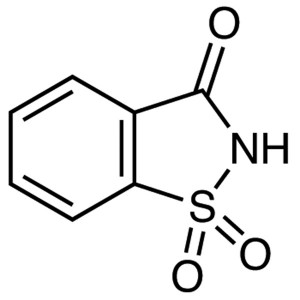
Saccharin Insoluble CAS 81-07-2 Purity >99.0% (...
-
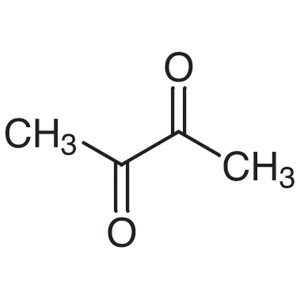
2,3-Butanedione CAS 431-03-8 Purity >99.0% (GC)
-
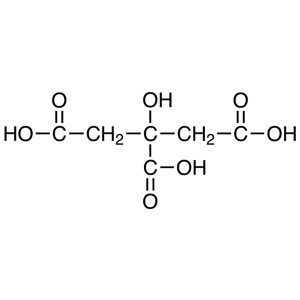
Citric Acid Anhydrous CAS 77-92-9 Assay 99.5~10...
-
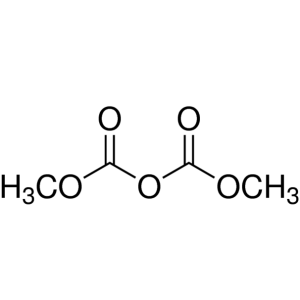
Dimethyl Dicarbonate (DMPC) CAS 4525-33-1 Purit...
-
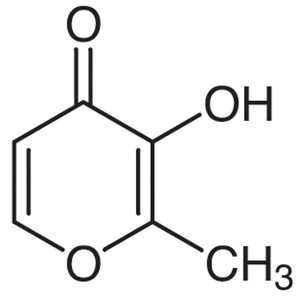
Maltol CAS 118-71-8 (3-Hydroxy-2-Methyl-4-Pyron...
-
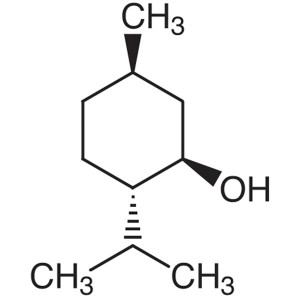
L-Menthol CAS 2216-51-5 Purity >99.5% (GC) Factory
-
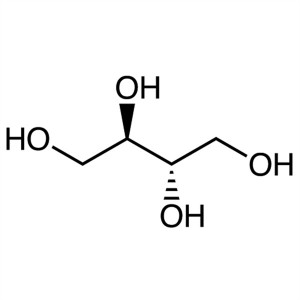
meso-Erythritol CAS 149-32-6 Assay 99.5~100.5% ...
-
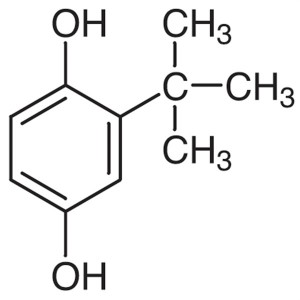
tert-Butylhydroquinone (TBHQ) CAS 1948-33-0 Pur...

